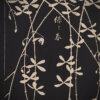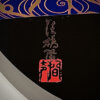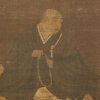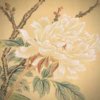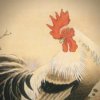Yamashita Seijō: Yamashita Seigai’s Son. An Artist Who Inherited the Flow of Watanabe Kazan and Tsubaki Chinzan
Seven Flowers of Autumn’s Garden
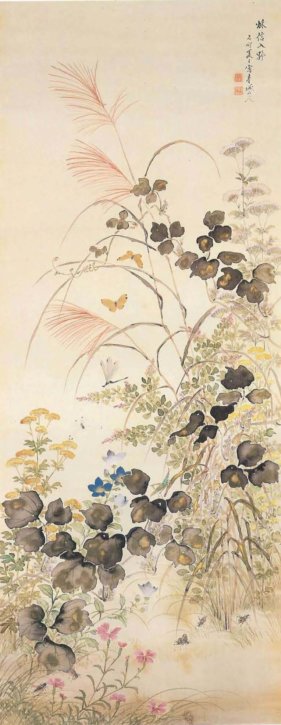
Yamashita Seijō was born in Shizuoka Prefecture in 1884 as Yamashita Seigai’s eldest son. He learned the basics of the Nanga painting style from his father Seigai and was good at bird-and-flower painting. In 1910, he moved to Tōkyō and studied under Komuro Suiun, Tazaki Sōun’s disciple. He stayed in Tōkyō for 5 years and was selected to exhibit at the Imperial Exhibition. Later, he returned to his hometown and died in 1962.
This work here was painted when Yamashita Seijō was 32 years old and depicts the seven flowers of autumn. The long Japanese pampas grass, boneset, Japanese arrowroot, ominameshi (patrinia flower), Chinese bellflower, and dianthus, everything is painted by the mokkotsu* technique. In addition, butterflies and dragonflies are flying, and crickets and bell crickets are on the ground. In particular, the leaves of the Japanese arrowroot were drawn by pouring gold into the ink, and as a result, the shades of the leaves are satisfactorily depicted. The blue of the bellflower and the crimson of the dianthus shine within the detailed expression, showing that he completely assimilated the traditional theme. For Seijō, these themes were passed down from Watanabe Kazan, Tsubaki Chinzan, and Yamashita Seigai, and he properly mastered the technique. It seems that you can hear the sounds of bell crickets and crickets.
- Mokkotsu: A technique where the object is expressed by the shading of “sumi” ink or color rather than by using outlines (“koppō”.) It is widely known as a technique for kachō-ga (paintings of flowers and birds).

